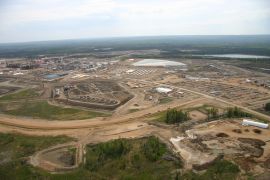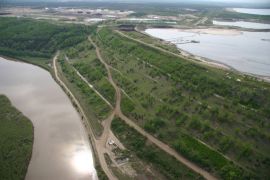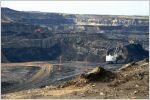Earlier today, the Government of Alberta launched a new “streamlined” regulator for energy projects in the province. While proponents say the move is an “exciting change” that will usher in “a new era” for energy regulation in Alberta, critics have compared the new single regulator to Frankenstein’s monster, arguing that the government is “building a new creature from old bones.”
The conflicting perspectives are understandable, given the ongoing lack of clarity around how the Alberta Energy Regulator (AER) will actually operate. Fortunately, it’s not too late for the province to seize the opportunity to improve on how energy projects in the province are regulated, because today’s announcement is really only phase one of a three-phase transition to the AER.
Alberta’s promise of regulatory “enhancement”
Today’s announcement is the result of a three-year process to combine decision-making and oversight related to energy projects in Alberta under a single regulator. It started in 2010 with discussions promising “regulatory enhancement” — igniting hopes that Alberta’s regulatory processes truly would be enhanced through greater clarity, openness and participation in policy-making.
 Having committed to putting the AER in place by June 2013, the government passed new legislation in December 2012, called the Responsible Energy Development Act (“REDA”). The changes brought by REDA will ultimately combine the regulatory powers of the Energy Resources Conservation Board (ERCB) and Alberta Environment and Sustainable Resource Development (AESRD) into one body, the AER.
Having committed to putting the AER in place by June 2013, the government passed new legislation in December 2012, called the Responsible Energy Development Act (“REDA”). The changes brought by REDA will ultimately combine the regulatory powers of the Energy Resources Conservation Board (ERCB) and Alberta Environment and Sustainable Resource Development (AESRD) into one body, the AER.
REDA left many scratching their heads, wondering what happened to the promises about greater clarity, openness and participation. The legislative focus was clearly to bring regulations under one house — a big win for industry proponents of “streamlining regulation” — but the current structure of the AER leaves hopes for “enhancement” out in the cold.
New approach’s first step has been backward
On a number of issues, the new regulatory system under REDA actually takes a step backward. One example is the new rules on “standing” — or the opportunity for the public to be heard in a project approval process. As the environmental law firm Ecojustice has explained, the definition of standing under REDA is narrower than under the prior regime. Ecojustice also points out that REDA “gives wide discretion to the AER to decide whether or not to hold a hearing” — meaning there could be fewer hearings into proposed energy projects under the new regulator than under the previous regime.
Ecojustice’s backgrounder on REDA points to two other significant changes: REDA is weaker than the prior legislation on both the right to costs awards (resources to help groups with standing to be truly heard) and the opportunity for independent review of the single regulator’s environment and water permit decisions (review is limited and is conducted as a self-review by the AER itself).
These important changes to Alberta’s regulatory regime suggest that, at the legislative level, environmental protection has lost ground with REDA.
Despite changes, “enhancement” still within reach
But it’s not too late for Alberta to make good on its promises of enhancing the regulatory regime. While REDA has generally weakened the environment’s standing at the legislative level, it leaves open the possibility for Cabinet to bring real regulatory improvements through its authority to make regulations under REDA.
With today’s proclamation of REDA, the AER assumes the ERCB’s responsibilities, but it will not assume the environment and water permitting authorities currently held by AESRD. For the time being, we’ll still have separated regulatory authorities between the AESRD and the newly constituted AER. This reflects the first step in the government’s “phased in approach to operations” — meaning that, for now, this interim regulatory regime will resemble the split regulatory jurisdictions between AERSD and the ERCB that Albertans are familiar with.
 At a time of intense scrutiny on Alberta’s environmental record, the launch of the single regulator offered the province an opportunity to prove to critics that it is serious about ensuring energy development is environmentally responsible. We have yet to see legitimate action to back up such a claim. But because we are only in phase one of the transition to the ultimate “single regulator,” there is still room for improvement. The province has more work ahead to clarify how AESRD’s regulatory roles will be transferred to the AER, slated to take place in the spring of 2014. This will present the government with another chance to refine the AER’s processes and the standards that it must apply, to take two or more steps forward.
At a time of intense scrutiny on Alberta’s environmental record, the launch of the single regulator offered the province an opportunity to prove to critics that it is serious about ensuring energy development is environmentally responsible. We have yet to see legitimate action to back up such a claim. But because we are only in phase one of the transition to the ultimate “single regulator,” there is still room for improvement. The province has more work ahead to clarify how AESRD’s regulatory roles will be transferred to the AER, slated to take place in the spring of 2014. This will present the government with another chance to refine the AER’s processes and the standards that it must apply, to take two or more steps forward.
Perhaps most importantly, the government has the power to employ important environmental standards — policies that have already been developed and adopted by the government under, for example, species protection plans, greenhouse gas policies and water quality thresholds. In fact, the government would be remiss if it failed to do so. AESRD staff must apply such government policies in carrying out its responsibilities and will continue to serve this function for non-energy projects even after the AER is fully phased in — it would be a perverse twist for water and environmental legislation to be applied more weakly for energy projects. How the AER adjudicates in instances where policies remain delayed or behind schedule such as the Alberta wetland policy, caribou range planning and the biodiversity management strategy will also be closely watched.
These environmental policies have important roles. True regulatory enhancement would require the AER to employ and demand such policies when it takes over AESRD’s roles and to bolster their application with important principles of environmental policy application like cumulative effects management and the precautionary principle.
Albertans who care about environmental protection should watch attentively to see that the next phase of implementing the single regulatory improves on the AER’s processes and brings in strong measures to close the gaps identified in this first phase. How the new regulator addresses issues that have been a cause of criticism for the ERCB such as lack of enforcement of oilsands tailings clean up rules and lack of transparency around pipeline spill incidents are important markers of how the regulator will protect the public interest.
For the Alberta government, failing to close these gaps would be a mistake. With the transfer of AESRD’s roles ahead, the stakes are too high to miss the opportunity to demonstrate leadership on environmental protection.
Ben Thibault was the director of the Pembina Institute's electricity program until 2016.



